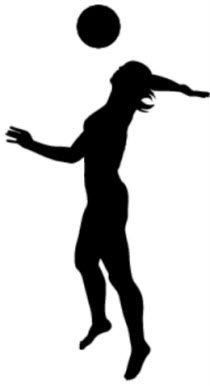The Difference Between A Volleyball Float Serve And A Jump Serve
The volleyball serve comes in different ways and is extremely important to master if in control. A serve can set the temp to how the point is played, where the serving team can control the return or can easily ace the opponents. Hand placement, footwork, and body posture all have to be in sync. However volleyball players should have different serves to help lead the team to win on every point possible. Everyone knows the underhand serve because everyone can do it and get across the net safely. With competitive volleyball, the serves have to include power and off-speed movements. Two of these serves include the jump serve and float serve.
The jump serve is when the serving player jumps high to hit the ball at its peak to increase the power of the serve.
The strike on the ball makes the serve more difficult to control on the other side. Very much like in tennis. The jump serve can is very effective with taller, stronger players who can be able to aim their ball squarely over the net and inbounds. However, it is also difficult to get right because of proper footwork and timing of the serve. The approach is behind the line, making three steps before jumping and making contact before crossing it. It’s a soft first step, a planting second step, and a jumping third step.
For a right-handed server, it is the ball in the left-hand tossed upward and forward with the right arm swinging forward to strike the ball with the palm and finishing forward. It must go out and down to add topspin to it. The problem with the jump serve is the high amount of faults, the difficulty in controlling the serve, and the easiness to get tired.
While the volleyball jump serve has spin, a float serve doesn’t.

The opponents cannot be totally prepared for a ball that could drop in anywhere, just like a knuckleball in baseball. Unless a power serve by jumping, the server stands still behind the line when serving. If you are right-handed, the ball is in the left hand with the airhole down on the palm. Because it is heavy and the serve should strike from under to lift easier. The palms should make contact rather than the fingers and do not follow through so you don’t give any topspin. There will be enough air to float over the net and drop when it loses enough air. This serve can be done underhanded or overhead, aimed to where the server wants the ball to land.
An effective serve from either form scores points and disrupts the opposing team’s flow. Executing the serve is another story. Getting the technique right helps create difficulty from the opponents in figuring out what the server will bring. And how they can handle what the ball will do. It is about not making anything predictable and disrupting their rhythm.